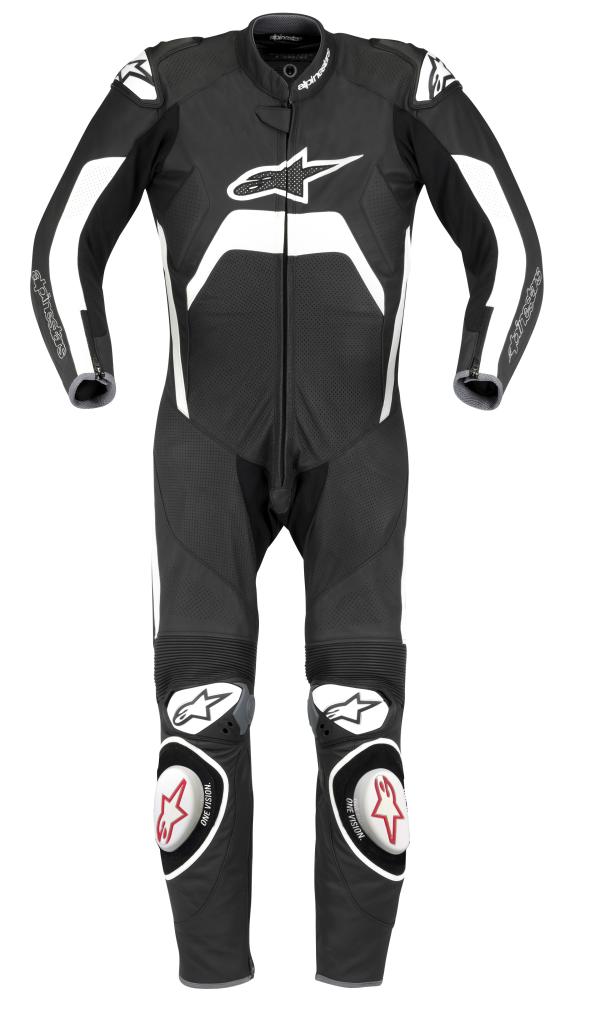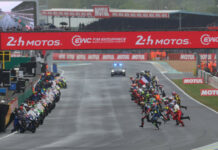Chest injuries can be painful, debilitating and even fatal, yet the average street or road course rider pays more attention to their footwear than the armor protecting their rib cage, and the protective apparel industry has focused too little on preventing chest injuries. That’s the message that emerged from Alpinestars officials, who unveiled their Fall 2010 line of protective road racing, street and off-road riding gear at the company’s North American headquarters in Torrance, California. Not only does the company offer chest armor as a stand-alone item, but every street and road racing garment introduced for Fall 2010 comes standard with pockets for chest protection and padding. The company’s Bionic Chest Pads for street and road racing gear which can be used to replace the standard chest padding combine hard armor with padding for impact dispersal and penetration resistance. The emphasis on chest protection is not an accident, said Jeremy Appleton, media communications manager for Alpinestars. “Chest protection, as a general topic and area of focus, has been neglected,” Appleton said at the introduction. “A lot of research has shown that chest protection is a critical component of rider safety. But a lot of people who get on a bike don’t give it proper consideration.” Anyone who has ridden or raced for any length of time knows someone who has suffered bruised or broken ribs. Such trauma is not only painful, but an impact that can inflict that type of damage can also threaten the internal organs that the rib cage has evolved to protect. Punctured or collapsed lungs are not only problems in and of themselves, but can have very serious consequences elsewhere if they are unable to provide adequate oxygen supplies to the rest of the body. Designing proper protective gear for that portion of the body presents a set of unique challenges, particularly in a road racing environment. The rib cage and stomach are areas of the body that expand and contract a considerable amount during hard riding; look at the gymnastic movements of the modern road racer. The front of the torso goes almost fully constricted like an abdominal crunch position when hunched over the tank on the straight. Alpinestars racing suits have a dropped neck in the front to accommodate the rider in a tuck. Then, mid-corner, the torso is extended fully and twisted to the side as the rider attempts to get as much of his or her mass as far as possible to the inside of the corner and as close as possible to the pavement. In addition, the total amount of impact attenuation (impact absorption) may not be the single most important factor in designing proper chest protection, said Colin Ballantyne, the chief engineer for Alpinestars. “The important thing is to distribute the impact over the largest area,” Ballantyne says. “There’s already an underlying structure.” That structure the rib cage stops before the hips, leaving the abdomen free to flex (or, in some cases, expand to accommodate a steady incoming stream of double cheeseburgers). Trying to protect that area is tricky; hard armor there, Appleton says, may have the unintended consequence of dislodging internal organs in case of a crash or forcing them up into the rib cage. So effective chest protection has to allow freedom of movement, spread the impact, and not create new or unintended consequences. A single piece of armor can work, but not if it is permanently affixed to the garment; most single-piece chest protectors are stand-alone devices that are inserted just before the suit is zipped up. Interestingly, research has shown that such a chest protector can be held in place adequately by the tension of the leathers or, in Alpinestars’ case, a silicon “grip-strip” on the outside of their Tech Chest Guard, Appleton says. For chest protection affixed to the suit via the liner, Alpinestars chose to use two pieces that can move independently, thus maximizing freedom of movement and allowing the use of a single zipper to close the front of the leathers. (The more zippers, the more potential locations for the suit to open up in case of a crash.) Standards for chest protection are among the issues under consideration for the next round of European CE standards for body armor, said Ballantyne, who works out of Alpinestars main office in Italy. That standard the proposed EN1621-3 regulation has been under discussion, but Ballantyne said that new EC standards evolve slowly and take years to put into place. In the meantime, Appleton says, the emphasis on chest protection by Alpinestars is one of the things that the protective apparel industry must continue to do as part of a broader mission. “The industry needs to keep educating riders not in a paternal way, or a criticizing way, because that turns people off,” he says. “We have to tell riders, ‘There’s a new technology, and here’s how it benefits you.'”
Updated With More Photos: Alpinestars Addresses The Question Of Chest Protection
Updated With More Photos: Alpinestars Addresses The Question Of Chest Protection
© 2010, Roadracing World Publishing, Inc.






